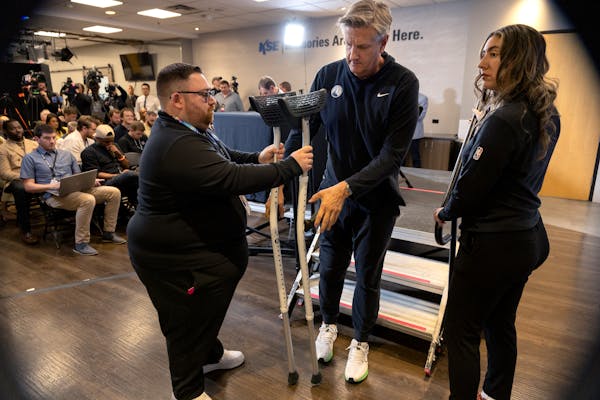What started as a history lesson on the South St. Paul stockyards has become a spirited campaign to preserve a local landmark — brick gates that once guided workers into the Armour meatpacking plant — for students at South St. Paul Middle School.
The gates are among the last vestiges of an industry that defined South St. Paul, once home to the largest stockyards in the world. The last meatpacker shut down in 2008.
In March, Mark Westpfahl began teaching his seventh-grade American studies classes about the stockyards as part of a larger unit on the Progressive Era. He showed them a photo of the gates located at the corner of Armour and Hardman avenues and noted that most other structures from the stockyard days were gone.
Most of his 120 students became engrossed in the idea of saving them. With their teacher's help, they started an online petition that now has attracted nearly 1,200 signatures and spurred a community conversation about preserving them.
"They started to learn that local history is just as important as state and national history — it has meaning to people," said Westpfahl, who has also been sharing the students' project on social media.
The community has noticed the advocacy, said Dakota County Commissioner Joe Atkins, who chatted with two of Westpfahl's students about the gates at a recent event.
"It went from a tiny blip on my radar screen ... to a big giant dot," he said. "I think [the students'] involvement could be the turning point on this issue, which is unusual."
Atkins said he would love to see the gates preserved — his grandfather and uncles worked in the stockyards — but realizes the city owns them and defers to city officials on future decisions.
Student Kaleigh Sorenson-Hippe also hopes the gates can be saved.
"I just think it's better to preserve our history than to get rid of it," she said.
Development ahead?
The gates sit on a 3.9-acre city-owned parcel zoned for light industrial development in the BridgePoint Business Park.
In 2021, a developer wanted to build office space on the site, prompting a City Council discussion about their fate, but that plan fell through.
At that time, some council members wanted to discuss preserving the gates while others cared more about developing the site. Other ideas included relocating them, recreating them elsewhere or incorporating them into a developer's plans.
The city hasn't had any serious inquiries about the property lately, said Michael Healy, South St. Paul city planner.
The gates pose a challenge to development because, if preserved as-is, they would likely prevent construction of a marketable building with enough square footage to meet city guidelines, city staff has said.
"City staff, we're relatively neutral," Healy said. "I think we understand there's some values decisions to be made about tax base ... historic preservation, site design."
Westpfahl said he hasn't yet contacted city officials about the gates, but he plans to do so soon.
"I haven't pushed too hard with the city yet," Westpfahl said, adding that realistically, he understands preserving the gates might not be a priority.
South St. Paul Mayor Jimmy Francis said Friday he did not want to comment on the effort because the issue hadn't officially been brought before the City Council.
A lesson in civic process
At South St. Paul Secondary School on Wednesday, students shared thoughts about what the site could become if the gates were preserved there. They pictured parks, restaurants and museums.
Colby Scott said the site should include a garden and playground and incorporate the names of stockyard workers.
Suri Cruz suggested moving the gates to a place where more people would see them, such as near the football fields.
Viviana Diaz shared a personal connection: Her great-grandfather, Martin Zuniga, worked at the stockyards. While she "wouldn't be devastated" if they were torn down, it would be sad, she said.
"I think there's a big significance to [them] because ... my great-grandpa would spend hours a day working there for his family so they would have a happy life," Diaz said.
Westpfahl said the discussions have taught students valuable lessons about economics, geography, history, civics and media literacy.
Students wanted to move the process "so incredibly fast" until they grasped how many different parts there were, he said.
"I think they learned that the civic process can be very long, but if you start to understand it, you feel like you can be a part of it," Westpfahl said.

St. Paul's Arborators play in the treetops: 'We're the world's only tree-climbing brass band'
Medic called in wake of shooting in Chanhassen

'I'm a living miracle.' Tommies athlete goes from broken bones to broken record

Minneapolis loses bid for WWE's 2025 WrestleMania to Las Vegas

